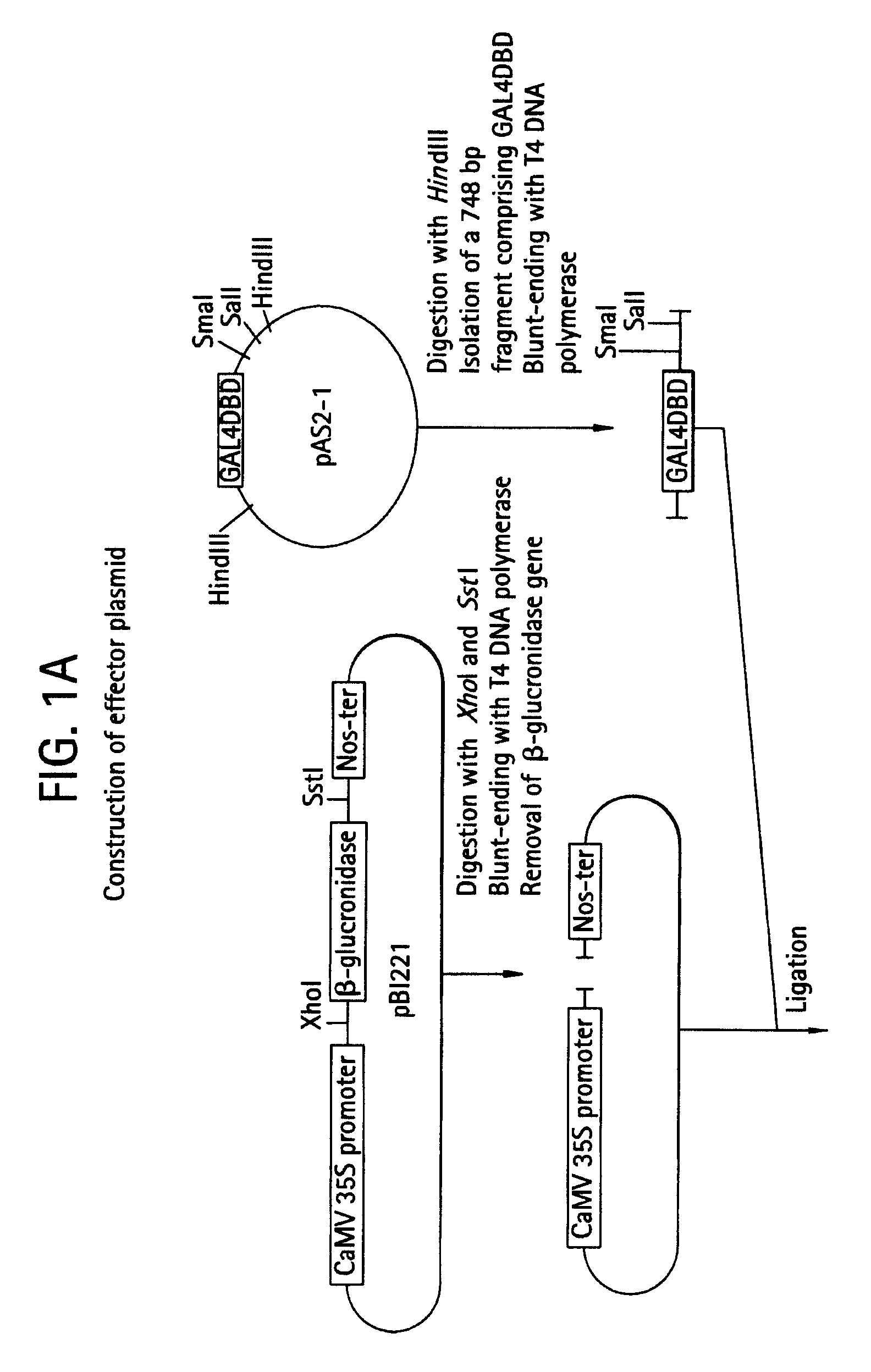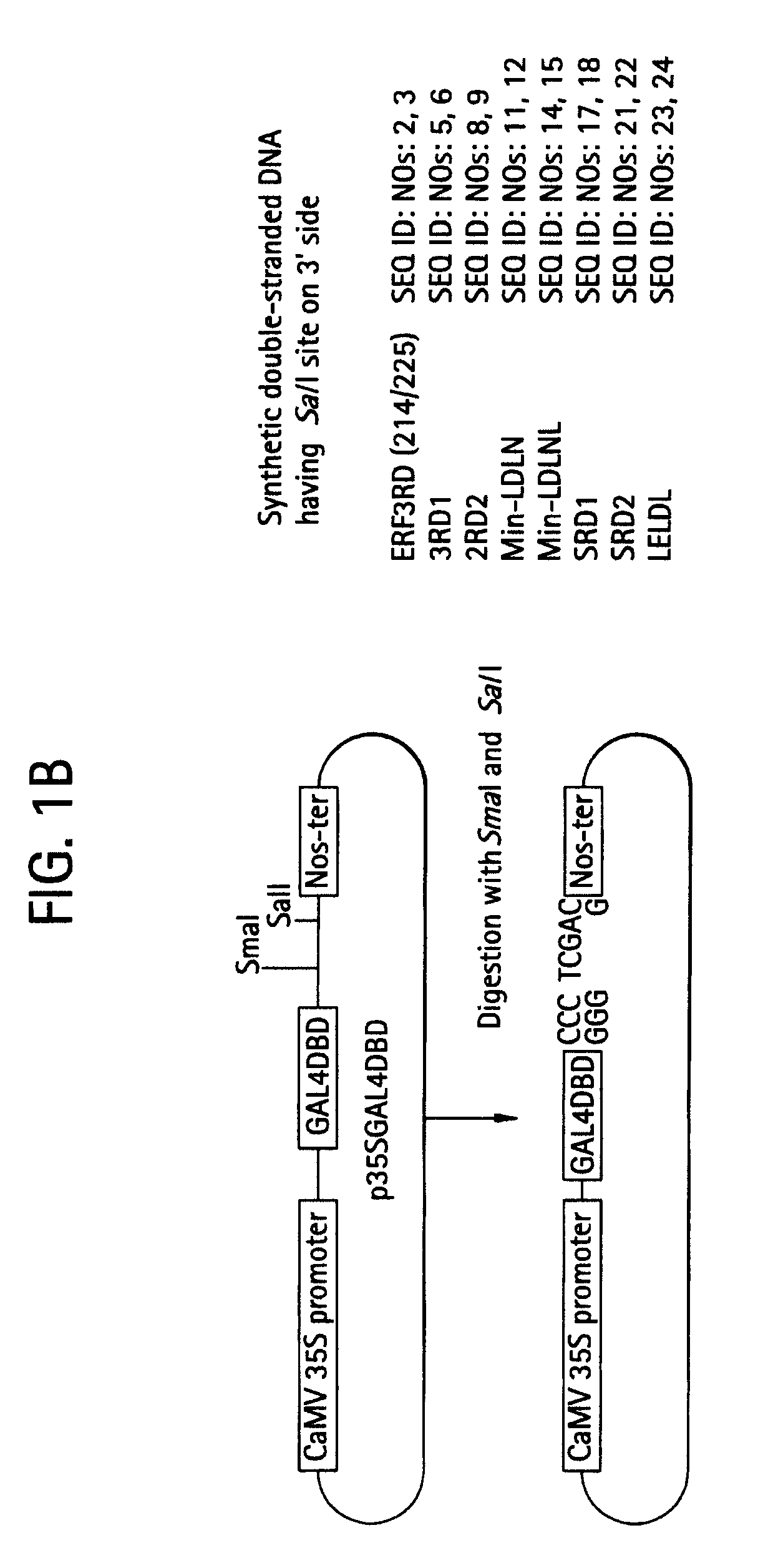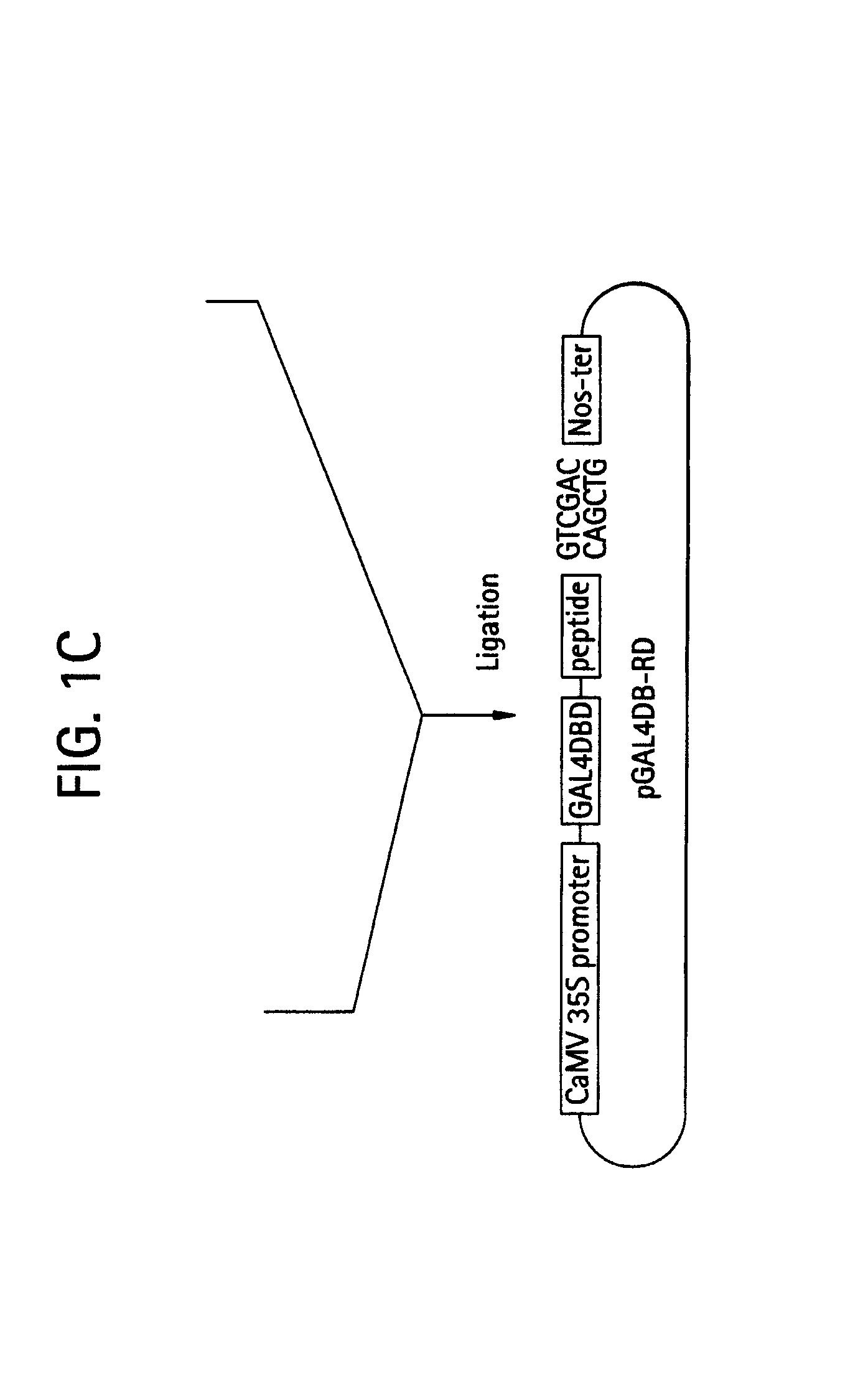Gene and peptide for transcriptional repressor
a transcriptional repressor and gene technology, applied in the field of peptides or proteins, can solve the problems of loss of ribozyme activity, inability to use antisense dna or rna to suppress the expression of genes other than the aforementioned target gene, etc., and achieve the effect of potent capacity and simple structur
- Summary
- Abstract
- Description
- Claims
- Application Information
AI Technical Summary
Problems solved by technology
Method used
Image
Examples
example 1
Identification of Peptide that Serves as a Repression Domain
(1) Construction of Effector Plasmid pGAL4DB-RD (FIG. 1)
[0115]Plasmid pBI221 (Clontech, U.S.A.) was cleaved with restriction enzymes XhoI and SacI and blunt-ended with T4 polymerase. Thereafter, the GUS gene was removed by agarose gel electrophoresis to obtain a fragment of 35S-Nos plasmid DNA comprising the cauliflower mosaic virus 35S promoter (hereafter referred to as “CaMV 35S”) and a transcription terminator of the nopaline synthase gene (Nos terminator, hereafter referred to as “Nos-ter”).
[0116]The pAS2-1 vector (Clontech) was digested with a restriction enzyme HindIII, a 748 bp DNA fragment encoding a DNA-binding domain of the yeast GAL4 protein (hereafter this fragment (the 1 / 147 region) is referred to as “GAL4DBD”) was isolated by agarose gel electrophoresis, and the isolated fragment was blunt-ended with T4 DNA polymerase. This DNA fragment comprising the GAL4DBD-encoding region was inserted in the blunt-ended sit...
example 2
Repression of Transcription by SUP Gene-containing Effector Plasmid
(1) Isolation of SUP Gene
[0134]The nucleotide sequence of the SUP gene has already been reported. Oligonucleotides having sequences corresponding to the sequences on the 5′-side and the 3′-side of the protein-encoding region of the SUP gene of Arabidopsis thaliana were synthesized, and PCR was carried out using the resulting sequences as primers and using the TAC clone:K14B15 (assigned from the Kazusa DNA Research Institute) comprising the SUP gene as a template. The DNA fragment comprising the protein-encoding region of the SUP gene was isolated. The total nucleotide sequence was determined, and it was confirmed to be the protein-encoding region of the SUP gene that had been already reported. The conditions for the aforementioned PCR was as follows: 25 cycles each consisting of denaturation at 94° C. for 1 minute; annealing at 47° C. for 2 minutes; and elongation at 74° C. for 1 minute.
(2) Construction of Effector P...
example 3
Effects of Gene Encoding the 175 / 204 Repression Domain of SUP in Repressing Transcriptions Activated by EIN3 in Plants
(1) Construction of Transformation Vector pBIG2
[0161]Plasmid p35S-GFP (Clontech, U.S.A.) was cleaved with restriction enzymes, HindIII and BamHI, a DNA fragment comprising the cauliflower mosaic virus 35S promoter (CaMV 35S) was separated by agarose gel electrophoresis, and the separated fragment was recovered. The plant transformation vector pBIG-HYG assigned from Michigan State University, U.S.A. (Becker, D., 1990, Nucleic Acid Research, 18: 203) was cleaved with restriction enzymes, HindIII and SstI, and a DNA fragment from which the GUS gene had been removed by agarose gel electrophoresis was obtained.
[0162]The following DNA strands were synthesized, incubated at 70° C. for 10 minutes, and annealed by natural cooling to prepare double-stranded DNA. This DNA fragment comprises BamHI restriction site at its 5′ terminus, the omega sequence derived from the tobacco m...
PUM
| Property | Measurement | Unit |
|---|---|---|
| temperature | aaaaa | aaaaa |
| temperature | aaaaa | aaaaa |
| temperature | aaaaa | aaaaa |
Abstract
Description
Claims
Application Information
 Login to View More
Login to View More - R&D
- Intellectual Property
- Life Sciences
- Materials
- Tech Scout
- Unparalleled Data Quality
- Higher Quality Content
- 60% Fewer Hallucinations
Browse by: Latest US Patents, China's latest patents, Technical Efficacy Thesaurus, Application Domain, Technology Topic, Popular Technical Reports.
© 2025 PatSnap. All rights reserved.Legal|Privacy policy|Modern Slavery Act Transparency Statement|Sitemap|About US| Contact US: help@patsnap.com



